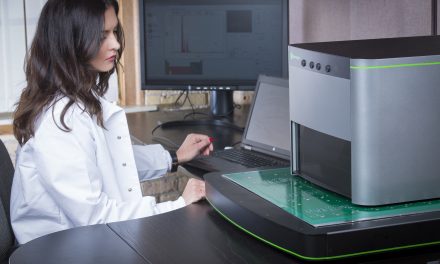Metrology Options Change as Chips Get Smaller
The progression toward smaller features, coupled with growing demand for better reliability over the chip’s lifetime has elevated chip inspection from a relatively indistinct but necessary technology into one of the most critical tools in fabs and packaging houses.
By Murray Slovick
Since the birth of integrated circuit (IC) inspection, detecting defects has been divided between electron and optical microscopy. In general, optical remains in greater use because of its high throughput. In a conventional defect inspection tool, the defects are captured by comparing circuit pattern images of adjacent dies. The defect is detected due to the difference in the images.
Improving inspection and processing of data to catch latent defects is a big deal in areas such as automotive electronics. Assembly defects account for up to 15 percent of semiconductor customer returns in the automotive chip market. As component counts in vehicles climb from the hundreds to the thousands and quality targets shift upward, engineers must find a realistic means of delivering zero or close to zero defective parts.
Going forward, however, due to physical limitations, at finer nanoscales the optical method just cannot remain the measuring rod. The increasing density and more complex placement of PCBs and their components have made it nearly impossible for traditional inspection methods to find faults.
Instead, optical inspection is being supplemented by electron microscopy for failure analysis, even though optical-based methods provide the fastest means of in-line inspection. Why? The resolution of optical technology is limited below what is called the Abbe diffraction limit (which determines the spot size to which a light beam can be focused).
10nm and Below
The electron microscope uses a beam of electrons to magnify an object’s image, unlike the optical microscope that uses visible light to magnify images. Electron microscopy, by virtue of its high resolution, has started to take charge at 10nm and below. As the geometries shrink, defects can reside deep within a structure. Electron microscopy can find those tiny defects and gain information on a structure and its composition even while it suffers the handicap of low throughput.
Most electron microscopy systems are scanning electron microscopes (SEMs), which use a raster technique. The beam goes back and forth over the object to build up an image. While the SEM’s rasterizing technique creates a detailed image, the slowness of its back-and-forth motion has restricted where it is used. You cannot afford to spend a lot of time on the structure on which you’re shining the electron microscopy. It’s also important that you do not use very high landing energies because that will cause damage in the structures you are inspecting. Landing energy—how much energy individual electrons receive in the beam—may be critical to its acceptance as an in-line tool because of this concern about how much energy product structures can take without degradation.
Another narrative worth exploring is time. To scan a typical die with electron microscopy could take as long as a week. If you want to measure in-line, you might have less than a couple of hours to do so because fabs cannot hold the wafer for more than that in between process steps.
Electron microscopy manufacturers still hope to gain market share by offering instruments that can provide faster inspection. But it’s no longer just about inspection time. The amount of data that needs to be digested is gigantic. This is particularly true for AI, which is being added into inspection systems to try and speed up the time needed to get results.
Defects that get rooted into advanced structures such as FinFETs pose serious inspection challenges, not just from a defect yield perspective, but also from a device performance point of view. Generally speaking, cross-section images of FinFETs are created with transmission electron microscopes (TEMs), not SEMs. The main difference between an SEM and a TEM is that the SEM creates an image by detecting knocked-off electrons, while the TEM uses transmitted electrons (electrons that are passing through the sample) to create an image.
As the fin width in a FinFET reaches 5nm and below, gate-all-around FETs—devices in which a gate is placed on all four sides of the channel—are being used by leading chip manufacturers. Bringing these advanced 3D structures into manufacturing requires fast, non-destructive measurement methods with as little dependence on off-line techniques as possible.
While an SEM can measure the chemical composition of surface features, an atomic-force microscope (AFM) can measure surface physical properties, such as magnetic fields, surface potential, surface temperature, friction and other properties. It allows accurate and non-destructive measurements. Unlike the electron microscope, which provides a two-dimensional image of a sample, the AFM provides a true three-dimensional surface profile.
X-Ray Inspection
Devices also can be analyzed through X-ray inspection, especially useful in PCB inspection. XRF (X-ray fluorescence) is a non-destructive analytical technique used to determine the elemental composition of materials. It is an excellent way to test PCB quality because it allows for the observation of all layers of a PCB simultaneously, finding hidden defects without risking damage to the board. Each of the elements present in a sample produces a set of characteristics that is unique for that specific element, which is why XRF spectroscopy also is well-suited for unearthing counterfeit electronic components, which typically have some level of material difference in comparison to authentic parts.
X-ray inspection is appropriate for defect analysis in power ICs, specifically GaN-on-SiC wafers. These systems can detect and classify a wide range of critical defects on compound semiconductor substrates (GaN, GaAs, InP, SiC etc.) with high sensitivity at production throughputs. SiC wafer defects can range in size from the angstrom level to several hundred nanometers, and failure to detect them can lead to device failure or rejection of the SiC wafer.
A 3D X-ray system has the ability to create 3D images of a PCB by building up a series of 2D cross-sections. This is not unlike how a CT scan works in the medical industry. XRF analysis can be performed on standard, de-lidded, de-capsulated or other electronic components.












